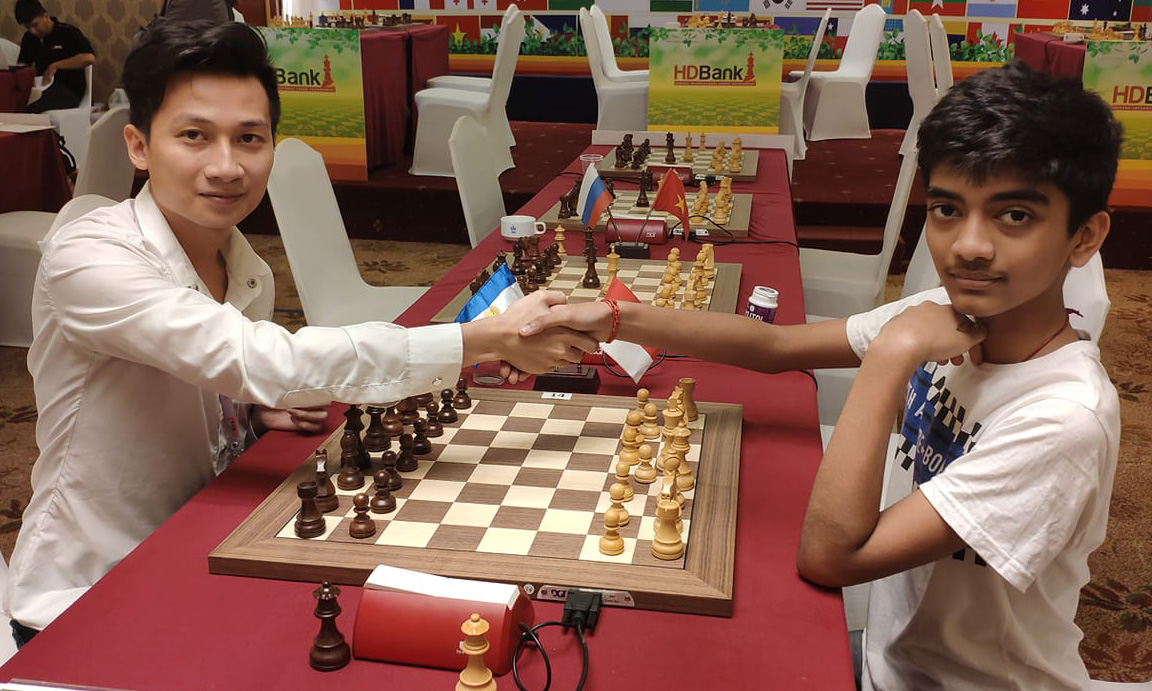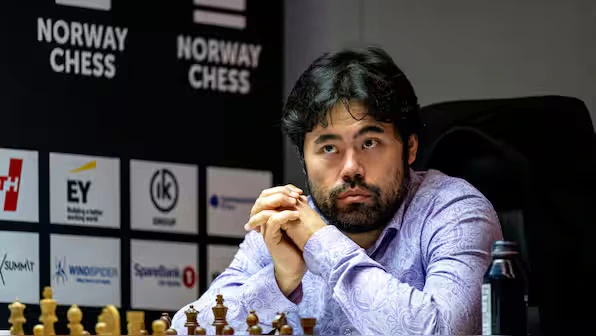When FIDE unveiled its newest creation — the Total Chess World Championship Tour — it promised a new era. The system, designed to crown a “complete” world champion across classical, rapid, and blitz, was billed as chess’s equivalent of the ATP Tour. But not everyone was impressed.
Hikaru Nakamura, the world’s top streamer and No. 2 ranked rapid player, went live to dissect the announcement. Over nearly an hour of commentary, he questioned the purpose, the timing, and even the name of the new circuit. His reaction was classic Hikaru — sharp, funny, and brutally honest.
“The naming itself sounds really, really clunky,” he began. “Calling it the Total Chess World Championship Tour sounds like a mouthful… it sounds kind of corny.”
To Nakamura, branding matters. In an era when chess has become a visual sport — streamed, clipped, and memed — clarity is everything. The “Grand Chess Tour” works, he said, because it’s simple and strong. The new name, in contrast, “feels like a marketing committee idea that nobody trimmed down.”
Once he got past the name, his skepticism only deepened. “I don’t understand the purpose of this,” he said. “We already have the Grand Chess Tour. This feels like trying to organize a tour to compete against a tour.”
He’s not wrong that the chess calendar is already crowded. Between the Grand Chess Tour, the Champions Chess Tour, and the World Rapid and Blitz Championships, elite players already juggle dozens of events each year. FIDE’s decision to add another multi-stage system raised the question: why now?
That question led Nakamura to the line that instantly went viral among his viewers. “Looking for the total chess player? I’m gonna be honest — we already have that player. His name is Magnus Carlsen.”
The remark hit at the core of FIDE’s announcement. If the new circuit aims to find the “most complete” player, that crown has arguably belonged to Carlsen for more than a decade. Since 2014, the Norwegian has held all three time-control world titles at once — classical, rapid, and blitz — an unprecedented triple. To Nakamura, building a new “comprehensive” title almost feels redundant.
His next target was the tournament’s controversial format — especially its new “fast classical” system: 45 minutes per side, 30-second increment, and rated as classical. “Counting games of 45 minutes as classical… I’m really confused,” Nakamura said. “I don’t think 45-minute chess is classical chess. I don’t understand why they’re counting this for classical ratings, but apparently they are.”
To most grandmasters, classical means deep calculation, long endgames, and four-hour battles. Reclassifying 45-minute games could reshape the rating landscape, potentially letting players boost their “classical” ratings through much faster events. Nakamura’s confusion reflected what many professionals were thinking: FIDE might be moving the goalposts.
“It feels like a lot of fluff,” he added, shaking his head. “It reminds me of Freestyle Chess… total fluff.”
That reference cuts deep for chess insiders. Freestyle (or Fischer Random) Chess was marketed as a revolution when Carlsen and FIDE launched the Freestyle World Championship. But after a burst of excitement, the format faded into niche status. Nakamura sees echoes of that here — another ambitious experiment, heavy on promotion, light on clarity.
“If the purpose of this is for top players to make money,” he said, “then sure — it’s positive for the top players. But as far as chess itself, I’m gonna say this is not that positive. It’s going to confuse the audience even further.”
He pointed to a fundamental issue: oversaturation. Chess now has multiple parallel “world championships,” often overlapping in calendar and media coverage. Fans already struggle to track which event matters most. “There are already far too many tournaments,” he said. “You’re cannibalizing viewership. You’re fragmenting the audience.”
At one point, Nakamura paused and asked what many were likely thinking: “Let’s be honest, is there even a difference between the Total Chess World Championship and the Grand Chess Tour?”
The comparison is unavoidable. Both feature elite players competing across rapid, blitz, and classical formats, both offer large prize pools, and both crown a year-end champion. The only real difference, as Nakamura implies, may be who runs it — FIDE instead of a private organizer.
He then dropped a more personal revelation. “I was invited to Norway Chess 2026 about three weeks ago,” he said. “There was no mention of it being part of something bigger. That makes me wonder when it all came together.”
That statement raised eyebrows. If one of the world’s top players, regularly courted by every major event, wasn’t told that Norway Chess would become part of a world championship tour, how long had the plan really been in motion? The timeline suddenly seemed less deliberate and more improvised.
Nakamura also questioned whether the new system might undermine FIDE’s own existing championships. “All you’re doing is copying a lot of stuff,” he said. “You’re now also cannibalizing rapid and blitz. If you have a 24-player event with all the top guys, why on earth is the World Rapid & Blitz not more prestigious? You’re invalidating your own championship.”
That argument highlights a deeper tension inside FIDE. The federation already runs multiple official world titles — for classical, rapid, and blitz — each with decades of history. The Total Chess Tour, with higher prize money and media hype, could overshadow them. In trying to expand, FIDE may end up diminishing its own legacy events.
Then came Nakamura’s boldest claim. “This feels like it’s being done to desperately try to get one player to return and compete in major FIDE events,” he said. “And that player, of course, is Magnus Carlsen.”
It’s no secret that Carlsen walked away from the classical world championship cycle in 2023, citing fatigue and lack of motivation. Since then, FIDE has struggled to maintain the same level of global interest. To Nakamura, this new tour — with mixed formats, faster games, and a broader skill test — seems tailor-made to tempt Carlsen back.
“Everything at the end of the day is about Magnus,” he said. “You build a system around one player… what are you going to do when he retires?”
It was a warning as much as a critique. Nakamura wasn’t just mocking the plan; he was pointing to its structural fragility. Building an entire global tour around a single superstar might succeed in the short term, but what happens once that star leaves the board?
His analysis, beneath the sarcasm, carried a clear message: FIDE’s idea could be great for marketing and money, but not necessarily for the health of the sport.
To be fair, Nakamura acknowledged that more elite events mean more opportunities — for players, sponsors, and fans. But he repeatedly returned to one question: what problem is this solving? The world already has a variety of formats and tours. The chess calendar is overflowing. And if the goal is to find the “total” player, Carlsen has already proven that mastery.
For all his criticism, Nakamura’s reaction underscored his passion for the game’s future. He wasn’t dismissing change; he was demanding coherence. His commentary reflected the same energy that has made his Twitch streams a magnet for millions — a mix of honesty, humor, and deep understanding of how chess connects with people beyond the 64 squares.
In the end, his verdict was blunt but not dismissive. The Total Chess World Championship Tour, he said, might find success if it learns from past experiments and defines itself clearly. But unless FIDE proves it’s more than “fluff” — more than another attempt to please one man — it risks becoming just another entry on an already crowded calendar.
“Chess doesn’t need more world champions,” Nakamura said at one point. “It needs better tournaments, clearer goals, and a reason for fans to care.”
And for now, that might be the truest move of all.

I’m Xuan Binh, the founder of Attacking Chess, and the Deputy Head of Communications at the Vietnam Chess Federation (VCF). My chess.com and lichess rating is above 2300. Send me a challenge or message via Lichess. Follow me on Twitter (X) or Facebook.

